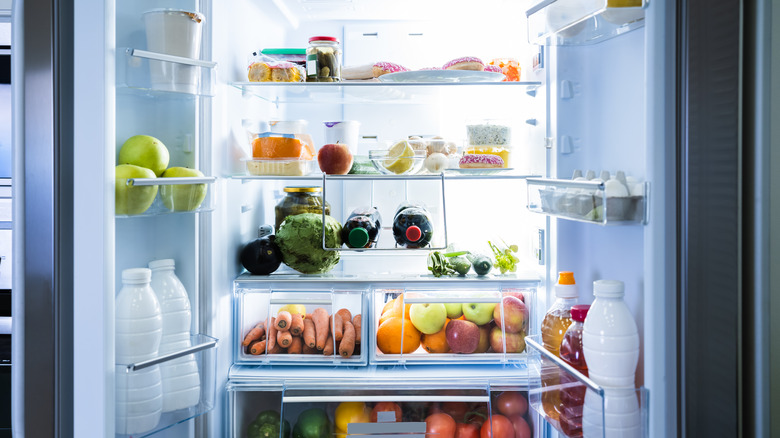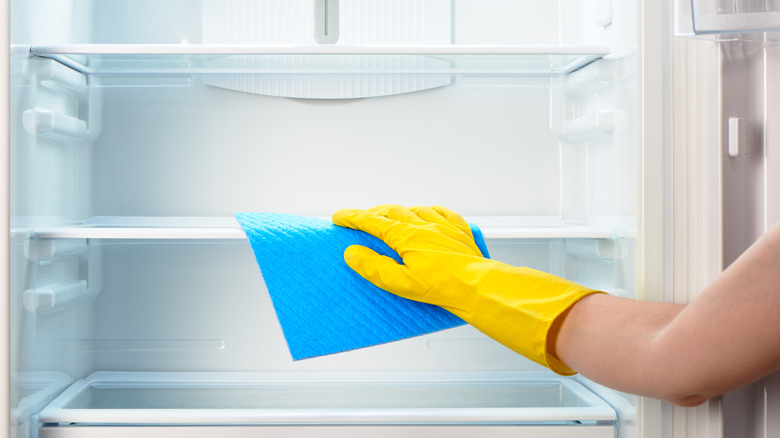Here's Why You Should Clean Your Fridge After A Food Recall
Dealing with a food recall can be a hassle on its own. But after you've looked at the plant numbers and determined whether or not you have an affected food, there's still more work to be done to ensure you and anyone who eats food from your fridge will be safe from illness. The issue with recalled foods is that they can potentially affect other foods that they come into contact with, especially if they are poorly packaged or not stored properly inside your fridge. According to Food Safety News, that adds up to potential cross-contamination of food. And when the germs of a recalled food spread to other parts of your fridge, that means food that was perfectly safe when you bought it could now contain E. coli, Salmonella or even Listeria.
To avoid getting sick from potential cross-contamination, you will need to discard other foods — beyond the lettuces, eggs, or other recalled foods — that might have been affected and thoroughly clean your fridge (via Food Poisoning Bulletin). Having to toss food is always unfortunate, but it's for your health and safety. The Centers for Disease Control and Prevention recommends starting the process by tossing not only the contaminated, recalled food, but any additional foods that may have been stored close to it or touching it. It's also a good practice to toss the recalled food in a sealed bag rather than just putting it in your kitchen trash can.
This is how you should clean your fridge
Next, you'll need to remove the rest of the food from the fridge and thoroughly clean the inside of the fridge itself (via CDC). That includes all drawers and shelves as well as any containers you might have used to store the recalled food. Be sure to work quickly so as to keep the refrigerated food at room temperature for less than two hours.
Use hot soapy water to clean all of the surfaces well and dry them with a clean towel. Once the surfaces are all clean, you can also choose to sanitize them with a disinfectant to ensure all of the germs have been killed. But it is important to make sure the surfaces are clean first — particularly if the disinfectant you use does not have a cleaning agent in it as the CDC points out. Wearing disposable gloves is also helpful while cleaning, but be sure to wash your hands before and after wearing gloves.
After cleaning the fridge, you can replace the shelves and drawers. Wipe off food, drinks, and other products you are returning to the fridge with hot water and soap before placing them back inside the clean fridge too. With that, you should be able to avoid any cross-contamination from a food recall.

